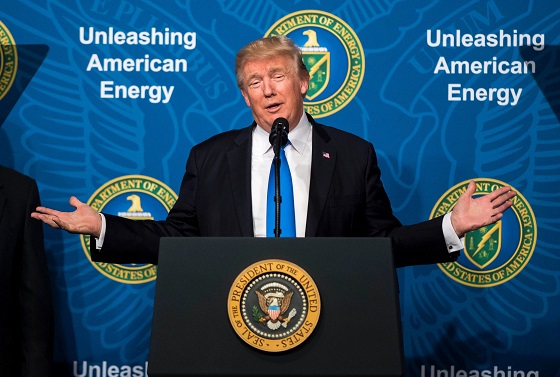Alberta
Alberta 2025 Budget Review from the Alberta Institute
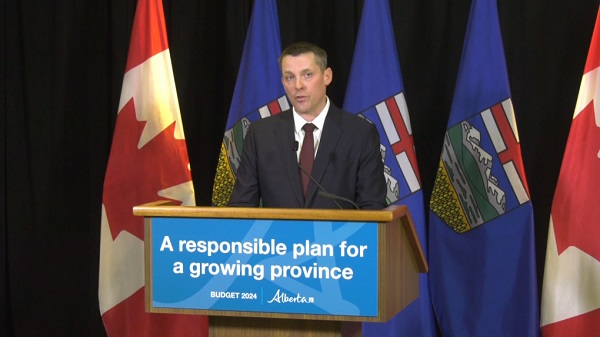
The government has just tabled its budget in the Legislature.
We were invited to the government’s advance briefing, which gave us a few hours to review the documents, ask questions, and analyze the numbers before the official release.
Now that the embargo has been lifted, we can share our thoughts with you.
However, this is just our preliminary analysis – we’ll have a more in-depth breakdown for you next week.
*****
The 2025/26 Budget is a projection for the next year – what the government expects will happen from April 1st, 2025 to March 31st, 2026.
It represents the government’s best estimate of future revenue and its plan for expenditures.
In the budget (and in this email) this type of figure is referred to as a Budget figure.
*****
The actual final figures won’t be known until the 2025/26 Annual Report is released in the middle of next year.
Of course, as we’ve seen in the past, things don’t always go according to plan.
In the budget (and in this email) this type of figure is referred to as an Actual figure.
Importantly, this means that the 2024/25 Annual Report isn’t ready yet, either.
*****
Therefore, in the meantime, the Q3 2025/26 Fiscal Update, which has figures up to December 31st, 2024, provides a forecast for the 2024/25 year.
The government looks at the actual results three quarters of the way through the previous year, and uses those figures to get the most accurate forecast on what will be the final result in the annual report, to help with estimating the 2025-26 year.
In the budget (and in this email) this type of figure is referred to as a Forecast figure.
*****
Accurately estimating, and tracking these three types of figures is a key part of good budgeting.
Sometimes, the economy performs better than expected, oil prices could be higher than initially forecast, or more revenue may come in from other sources.
But, other times, there’s a recession or a drop in oil prices, leading to lower-than-expected revenue.
On the spending side, governments sometimes find savings, keeping expenses lower than planned.
Alternatively, unexpected costs, disasters, or just governments being governments can also drive spending higher than budgeted.
The best way to manage this uncertainty is:
- Be conservative in estimating revenue.
- Only plan to spend what is reasonably expected to come in.
- Stick to that spending plan to avoid overspending.
By following these principles, the risk of an unexpected deficit is minimized.
And if revenue exceeds expectations or expenses come in lower, the surplus can be used to pay down debt or be returned to taxpayers.
On these three measures, this year’s budget gets a mixed grade.
*****
On the first point, the government has indeed made some pretty conservative estimates of revenue – including assuming an oil price several dollars below where it currently stands, and well below the previous year’s predictions.
The government has also assumed there will be some significant (though not catastrophic) effects from a potential trade war.
If oil prices end up higher, or Canada avoids a trade war with the US, then revenue could be significantly higher than planned.
Interestingly, this year’s budget looks very different depending on whether you compare it to last year’s budget, or the latest forecast.
This year’s budget revenue is $6.6 billion lower than what actually happened in last year’s forecast revenue.
But, this year’s budget revenue is actually $600 million higher than what was expected to happen in last year’s budget revenue.
In other words, if you compare this year’s budget to what the government expected to happen last year, revenue is up a small amount, but when you compare this year’s budget to what actually happened last year, revenue is down a lot.
*****
On the second point, unfortunately, the government doesn’t score so well.
Expenses are up quite a bit, even though revenue is expected to drop.
According to some measurements, expenditures are increasing slower than the combined rate of population growth and inflation – which is the goal the government set for itself in 2023.
But, when other expenses like contingencies for emergencies are included, or when expenses are measured in other ways, spending is increasing faster than that benchmark.
This year’s budget expenses are $4.4 billion higher than what was actually spent in last year’s forecast expenses.
But, this year’s budget expenses are $6.1 billion higher than what was expected to happen in last year’s budget expenses.
Perhaps the bigger question is why is expenditure increasing at all when revenue is expected to drop?
If there’s less money coming in, the government should really be using this as an opportunity to reduce overall expenditures.
*****
On the third point, we will – of course – have to wait and see what the final accounts look like next year!
*****
Before we wrap up this initial analysis, there’s one aspect of the budget that is likely to receive significant attention, and that is a tax cut.
Originally planned to be phased in over the next few years, a tax cut will now be back-dated to January 1st of this year.
Previously, any income below about $150,000 was subject to a 10% provincial tax, while incomes above $150,000 attract higher and higher tax rates of 12%, 13%, 14%, and 15% as incomes increase.
Under the new tax plan, incomes under $60,000 would only be taxed at 8%, with incomes between $60,000 and $150,000 still paying 10%, and incomes above $150,000 still paying 12%, 13%, 14%, and 15%, as before.
Some commentators are likely to question the wisdom of a tax cut that reduces revenue when the budget is going to be in deficit.
But, the reality is that this tax cut doesn’t actually cost much.
We’ll have the exact figures for you by next week, but suffice to say that it’s a pretty small portion of the overall deficit, and there’s a deficit because spending is up a lot, not because of a small tax cut.
In general, lower taxes are good, but we would have preferred the government work towards a lower, flatter tax instead.
The Alberta Advantage was built on Alberta’s unique flat tax system where everyone paid the same low flat tax (not the same amount, the same percentage!) and so wasn’t punished for succeeding.
Alberta needs a plan to get back to a low flat tax, and we will continue to advocate for this at the Alberta Institute.
Maybe we can do better than just returning to the old 10% flat tax, though?
Maybe we should aim for a flat tax of 8%, instead?
That’s it for today’s quick initial analysis.
In next week’s analysis, we’ll break down the pros and cons of these decisions and outline where we might have taken a different approach.
In the meantime, if you appreciate our work and want to support more of this kind of independent analysis of Alberta’s finances, please consider making a donation here:
Alberta
Tell the Province what you think about 120 km/h speed limit on divided highways
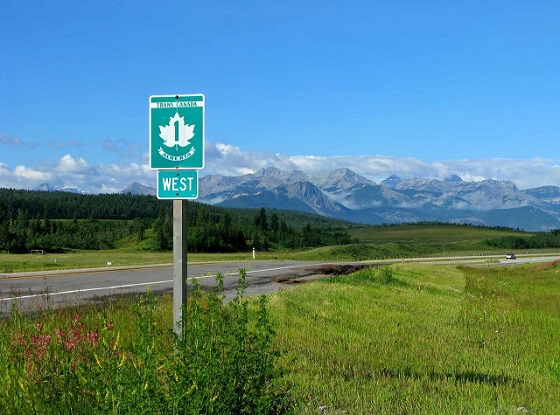
Alberta’s government is engaging with Albertans on increasing speed limits on rural highways.
Starting Nov. 7, Albertans can share their views on modernizing speed limits on divided highways through an online survey running until Dec. 12. The survey will ask how Albertans view raising the speed limit by 10 km/h on various highways from 110 km/h to 120 km/h.
“Alberta’s government is investigating how to safely increase speed limits on divided highways, and if Albertans support increasing speed limits. We are investing more than $1.5 billion this year alone to improve highway safety and upgrade infrastructure across the province. We want Albertans to be able to drive the speed limit that the highways are designed for. Modern vehicles combined with public awareness mean we can explore higher speed limits.”
The survey will provide Albertans with the opportunity to provide input on which highways they would prioritize having a speed limit increase, their views on restricting commercial trucks from using the far-left lane on highways with three or more lanes and any other feedback that would improve driving experiences on provincial highways.
Following a review of the survey results, Alberta’s government plans to conduct a mini-trial of a 120 km/h speed limit to assess the impacts of higher speed limits on divided highways. The trial will include strong monitoring to assess driving behaviour.
Alberta’s government reminds motorists to slow down and drive to the conditions. Speed limits are set for ideal conditions. When roads are wet, icy or when there is reduced visibility, motorists should slow down.
Quick facts
- Alberta’s provincial highway network includes more than 64,000 lane kilometres of highways, about 11,700 lane kilometres of which are divided.
- The posted speed limits of Alberta’s divided highways range from 100 to 110 km/h, although the posted speed limits on segments passing through cities, towns and First Nation lands can be as low as 50 km/h due to factors such as signalized intersections, pedestrians and local access.
Related information
- The survey is available online.
Alberta
Alberta Announces Members of Class Size and Complexity Committee

A new Class Size and Complexity Cabinet Committee has been struck to address classroom challenges.
Taking action on class size and complexity
Classrooms in Alberta continue to grow and are becoming increasingly complex, and immediate action is needed to address these issues in the public education system. To meet these issues head on, the Class Size and Complexity Cabinet Committee has been created. The cabinet committee will help guide government policy and deploy resources to deal with class sizes and classroom complexity.
“We are committed to providing world-class education, and we’re building schools and funding education at a rate unprecedented in this province. This committee will help us address the concerns of teachers, parents and students around class sizes and complexity.”
Throughout November, Alberta’s government will continue work with school boards to collect data on class sizes and classroom composition. The cabinet committee will use this data to direct resources to the classrooms that need it the most. Starting in January, this data will be made available and released annually.
The Class Size and Complexity Cabinet Committee will be co-chaired by the Premier of Alberta and the Minister of Education and Childcare. It will also include non-voting members representing school boards, administrators and a teacher representative of the ATA. The committee will also hear from school boards, academic experts, teachers, educational assistants, complex needs specialists and parents to inform its decisions and guide this vital work.
“We heard teacher concerns, and we are providing solutions. The Class Size and Complexity Cabinet Committee will help us take immediate action and ensure teachers and students are given the support they need to succeed.”
In June 2025, Alberta’s government established the Aggression and Complexity in Schools Action Team to provide advice on addressing classroom complexity. The report has been received and will be released soon. Over the coming months, the cabinet committee will start rolling out solutions informed by the action team’s recommendations. In addition, the committee will guide the creation of a new inclusive education policy framework.
“The work of this committee will support teachers in responding to the growing complexity in our classrooms. We will ensure that the voices of the contributors to the initial work guide
solutions that truly improve the educational experience for students and the educators who serve them.”
“I appreciate the government’s recognition of the impact of classroom complexity and their commitment to working collaboratively for improvement. Supporting teachers ultimately improves classroom conditions and student outcomes.”
Using data collected, this cabinet committee will also guide Alberta’s government in executing its commitment to hire 3,000 new teachers and 1,500 new educational assistants over the next three years. They will also assist in identifying and prioritizing where new schools and modulars should be built, advancing the government’s commitment to invest $8.6 billion to build 130 new schools, and provide 109 modular classrooms in the growing communities that need them urgently.
Quick facts
- Members of the Class Size and Complexity Cabinet Committee include:
- Danielle Smith, Premier of Alberta
- Demetrios Nicolaides, Minister of Education and Childcare
- Jason Nixon, Minister of Assisted Living and Social Services
- Rick Wilson, Minister of Mental Health and Addiction
- Searle Turton, Minister of Child and Family Services
- Lynnette Anderson, chief superintendent, Edmonton Catholic Schools
- Nicole Buchanan, chair, Red Deer Public Schools
- Marilyn Dennis, former president of Alberta School Boards Association
- Mike McMann, superintendent, Fort Vermilion Schools and President, College of Alberta School Superintendents
- Joanne Pitman, chief superintendent, Calgary Board of Education
- Dr. Elissa Corsi, Alberta Teachers’ Association
- Only Cabinet members are voting members. Additional guests will be invited to attend and share their expertise at the discretion of the chairs.
- School boards will be required to submit data on Alberta classrooms by Nov. 24.
-

 Business5 hours ago
Business5 hours agoCBC cashes in on Carney as the news industry playing field tilts further in its favour, crippling the competition
-

 Energy1 day ago
Energy1 day agoThawing the freeze on oil and gas development in Treaty 8 territory
-

 National2 days ago
National2 days agoNew Canadian bill would punish those who deny residential indigenous schools deaths claims
-
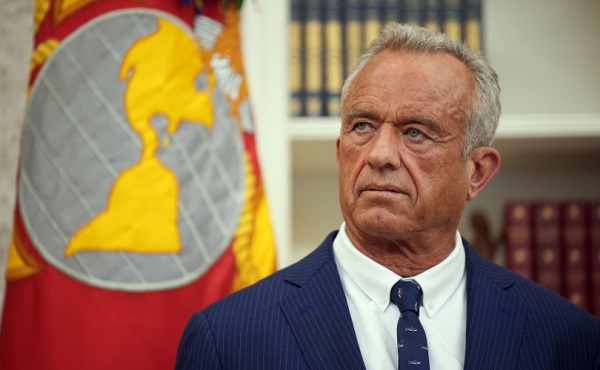
 Health2 days ago
Health2 days agoRFK Jr. urges global health authorities to remove mercury from all vaccines
-

 Business1 day ago
Business1 day agoWhat Pelosi “earned” after 37 years in power will shock you
-

 Business1 day ago
Business1 day agoOttawa should stop using misleading debt measure to justify deficits
-

 International1 day ago
International1 day agoLarge US naval presence in Caribbean reveals increased interest in western security
-
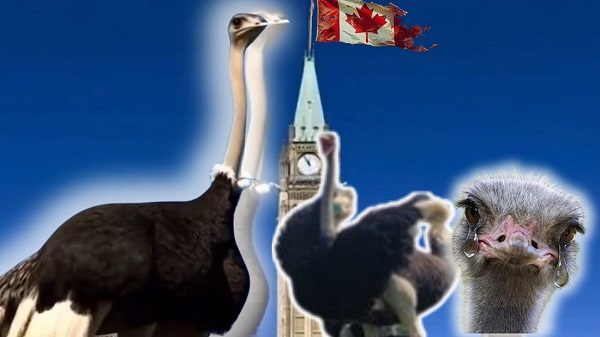
 Agriculture1 day ago
Agriculture1 day agoThe Canadian Food Inspection Agency’s Bloodlust: Worshipping Policies While Ignoring Science



